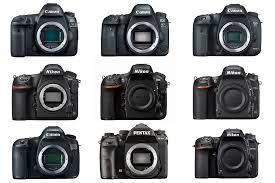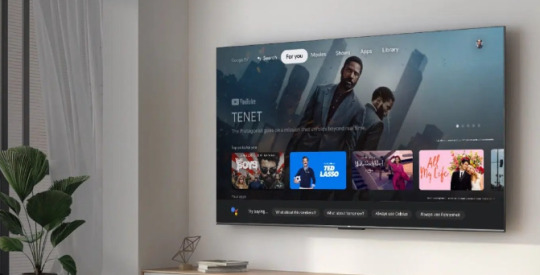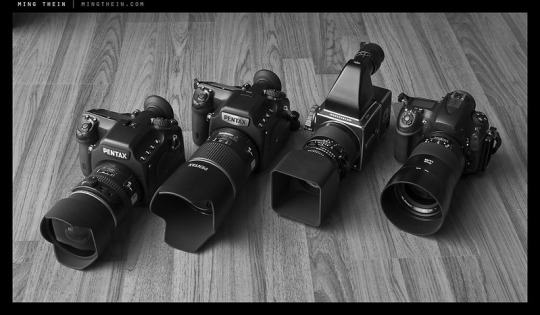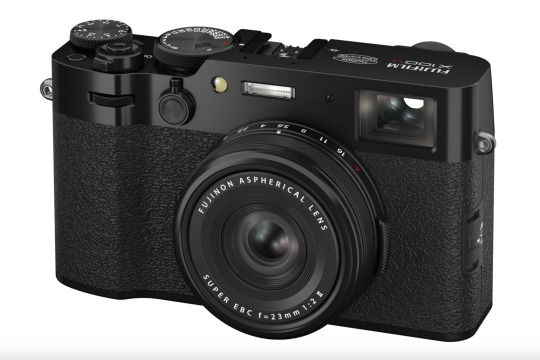#CMOS image sensor
Explore tagged Tumblr posts
Video
youtube
SincereFirst 8MP IMX179 USB3.0 Separate Camera Module
This camera module is a detached high-resolution USB camera module. The camera module has a resolution of 8 million pixels and uses the Sony IMX179 CMOS image sensor. The interface type is USB3.0 and the resolution is 3264×2488. It is widely used. Used in home monitoring, office security, scanning equipment, etc.
#youtube#This camera module is a detached high-resolution USB camera module. The camera module has a resolution of 8 million pixels and uses the Sony#SincereFirst#camera module#Sony IMX179 CMOS image sensor#Sony IMX179#CMOS image sensor#USB camera module#sincerefirst USB camera module#sincerefirst camera module
2 notes
·
View notes
Video
youtube
SincereFirst CMOS OV7670 Imaging Sensor 0 3MP Camera Module
SincereFirst CMOS OV7670 Imaging Sensor 0.3MP Camera Module is a low-cost CMOS color camera module that can output VGA resolution images of 640x480 at 30fps. It only requires a single 3.3V power supply and can be used on devices such as Arduino, STM32, Chipkit, ARM, DSP, FPGA and others. This module provides complete single-chip VGA camera functionality and image processing in a small size with high sensitivity.
#youtube#Camera Module#SincereFirst#sincere first#CMOS OV7670 Imaging Sensor#CMOS#CMOS OV7670#imaging sensor
2 notes
·
View notes
Text
Information
The KODAK PIXPRO FZ55-BK is a compact yet powerful point-and-shoot digital camera designed for everyday photography and vlogging. With a 16-megapixel CMOS sensor, 5X optical zoom, and 28mm wide-angle lens, this camera delivers sharp and detailed images with ease. It also records 1080P Full HD videos, making it ideal for capturing precious moments on the go. Its lightweight design and intuitive controls make it perfect for beginners, travelers, and vloggers alike.
>>>>---- Click To Know More About That Product -----<<<<<
Blue Color Camera >>>>----- https://amzn.to/4jNMgFG -----<<<<<
Red Color Camera >>>>----- https://amzn.to/4hm6jcG -----<<<<<
Key Features
📸 High-Quality Images with 16MP CMOS Sensor
The 16-megapixel BSI (Back-Side Illuminated) CMOS sensor ensures crisp, clear, and vibrant images, even in low-light conditions.
Supports various scene modes for optimized photography, including portrait, landscape, night, and more.
🔍 5X Optical Zoom with 28mm Wide-Angle Lens
Get closer to the action with 5X optical zoom, allowing you to capture distant subjects without losing image quality.
The 28mm wide-angle lens is perfect for landscape shots, group photos, and vlogging.
🎥 Full HD 1080P Video Recording
Capture high-definition videos at 1080P resolution for smooth and detailed footage.
Perfect for vlogging, video journaling, and casual filmmaking.
🎞 Digital Image Stabilization
Reduces blur and shaky footage, ensuring stable photos and videos, even when shooting handheld.
📱 2.7" LCD Display
The bright 2.7-inch LCD screen provides a clear view for framing shots and reviewing images.
🔋 Rechargeable Lithium-Ion Battery
Includes a rechargeable Li-ion battery for extended shooting sessions without the need for disposable batteries.
🎭 Face Detection & Beauty Mode
Face detection helps focus on faces automatically for sharp portraits.
Beauty mode enhances skin tones and smoothens features for flattering selfies.
🌙 Low-Light & Night Mode
Capture bright and clear images even in dim lighting conditions with specialized low-light settings.
🏞 Multiple Scene Modes
Various preset scene modes optimize settings for different shooting environments, including portrait, landscape, night, sports, beach, and more.
📂 Expandable Storage
Supports microSD/micro SDHC cards (up to 32GB) for storing thousands of photos and videos.
Specifications
FeatureDetailsSensor16MP CMOS SensorZoom5X Optical ZoomLens28mm Wide-AngleDisplay2.7-inch LCDVideo Resolution1080P Full HDStabilizationDigital Image StabilizationBatteryRechargeable Li-ion BatteryStoragemicroSD/micro SDHC (up to 32GB)ConnectivityUSBWeightLightweight & Portable
Who Is It For?
✅ Beginners – Simple point-and-shoot functionality makes it easy to use. ✅ Vloggers – Full HD video recording and a compact design make it great for on-the-go content creation. ✅ Travelers – Lightweight and portable for easy carrying. ✅ Families & Casual Users – Ideal for capturing everyday moments and special occasions.
What’s in the Box?
✔ KODAK PIXPRO FZ55-BK Digital Camera (Black) ✔ Rechargeable Li-ion Battery ✔ USB Charging Cable ✔ Wrist Strap ✔ Quick Start Guide
#Information#The KODAK PIXPRO FZ55-BK is a compact yet powerful point-and-shoot digital camera designed for everyday photography and vlogging. With a 16#5X optical zoom#and 28mm wide-angle lens#this camera delivers sharp and detailed images with ease. It also records 1080P Full HD videos#making it ideal for capturing precious moments on the go. Its lightweight design and intuitive controls make it perfect for beginners#travelers#and vloggers alike.#>>>>---- Click To Know More About That Product -----<<<<<#Blue Color Camera >>>>----- https://amzn.to/4jNMgFG -----<<<<<#Red Color Camera >>>>----- https://amzn.to/4hm6jcG -----<<<<<#Key Features#📸 High-Quality Images with 16MP CMOS Sensor#The 16-megapixel BSI (Back-Side Illuminated) CMOS sensor ensures crisp#clear#and vibrant images#even in low-light conditions.#Supports various scene modes for optimized photography#including portrait#landscape#night#and more.#🔍 5X Optical Zoom with 28mm Wide-Angle Lens#Get closer to the action with 5X optical zoom#allowing you to capture distant subjects without losing image quality.#The 28mm wide-angle lens is perfect for landscape shots#group photos#and vlogging.#🎥 Full HD 1080P Video Recording#Capture high-definition videos at 1080P resolution for smooth and detailed footage.
0 notes
Video
youtube
SF FX686AB视频展示
0 notes
Text
CMOS 3D Image Sensor Market

0 notes
Text
5 Best Sony Cameras
Here are 5 of the best Sony cameras across different categories, whether you're into photography, videography, or hybrid use:
Bundle deals Free shipping on 3+ items "Click to Buy"
📸 1. Sony Alpha 1 (A1) — Best Overall Professional Camera
Sensor: 50.1MP Full-frame Stacked CMOS
Video: 8K 30p, 4K 120p
AF: Real-time Eye AF (human, animal, bird)
Burst: 30 fps
Best For: Professional photographers and filmmakers
Why It's Great: Flagship model with no compromises on speed, resolution, or video.
🎥 2. Sony FX3 — Best for Cinematic Video
Sensor: 12.1MP Full-frame Exmor R
Video: 4K 120p, 10-bit 4:2:2, S-Cinetone
Mount: E-mount
Features: Active cooling, compact cine-body, XLR input
Best For: Filmmakers and content creators
Why It's Great: Cinema-grade video quality in a small, handheld form factor.
📷 3. Sony A7R V — Best for High-Resolution Photography
Sensor: 61MP Full-frame BSI CMOS
Video: 8K 24p, 4K 60p
AI Processor: Improved subject recognition & tracking
IBIS: Up to 8 stops
Best For: Landscape, portrait, product photography
Why It's Great: Insane detail and cutting-edge autofocus.
⚖️ 4. Sony A7 IV — Best Hybrid Camera (Value & Performance)
Sensor: 33MP Full-frame Exmor R
Video: 4K 60p (Super 35), 10-bit 4:2:2
AF: Real-time Eye AF
Best For: Enthusiast photographers & hybrid shooters
Why It's Great: Incredible image quality with top-tier video features at a reasonable price.
📱 5. Sony ZV-E1 — Best for Vloggers & Content Creators
Sensor: 12MP Full-frame Exmor R
Video: 4K 120p, 10-bit 4:2:2
Features: AI-based subject tracking, built-in stabilization
Best For: YouTubers, travel vloggers
Why It's Great: Top video quality with creator-focused features in a small, lightweight body.
2 notes
·
View notes
Note
Lliana: Naaah, that won't happen. I changed the CMOS image sensor, changed the SD card... ah, it had a wireless module for Bluetooth, to remote access, changed that too, and I checked the PCB (the circuit board) if there was anything that may make it possible to hack. It was not hard really, and the lady who somehow got into my apartment when I wasn't looking just did not put a lot of effort into that... except breaking and entering, but... otherwise, nah.
Lliana seems to have been very thorough with the camera.
Lliana: What is more interesting is that the SD card was previously used before getting into the camera...
Oooh, gossip.
Lliana also pulls out a bag of confitted almonds, from the right hand, with chocolate to snack on. Then offers some to Wine.
Wine does take a few almond slices lol
Wine leans in clearly interested
Wine: OH~ AND WHAT WAS ON IT?
5 notes
·
View notes
Text

KAIST innovates mid-infrared photodetectors for exoplanet detection, expanding applications to environmental and medical fields
NASA’s James Webb Space Telescope (JWST) utilizes mid-infrared spectroscopy to precisely analyze molecular components such as water vapor and sulfur dioxide in exoplanet atmospheres. The key to this analysis, where each molecule exhibits a unique spectral "fingerprint," lies in highly sensitive photodetector technology capable of measuring extremely weak light intensities. Recently, KAIST researchers have developed an innovative photodetector capable of detecting a broad range of mid-infrared spectra, garnering significant attention.
< Photo 1. (from the left) Ph.D. candidate Inki Kim (co-author), Professor SangHyeon Kim (corresponding author), Dr. Joonsup Shim (first author), and Dr. Jinha Lim (co-author) of KAIST School of Electrical Engineering. >
KAIST (represented by President Kwang-Hyung Lee) announced on the 27th of March that a research team led by Professor SangHyeon Kim from the School of Electrical Engineering has developed a mid-infrared photodetector that operates stably at room temperature, marking a major turning point for the commercialization of ultra-compact optical sensors.
The newly developed photodetector utilizes conventional silicon-based CMOS processes, enabling low-cost mass production while maintaining stable operation at room temperature. Notably, the research team successfully demonstrated the real-time detection of carbon dioxide (CO₂) gas using ultra-compact and ultra-thin optical sensors equipped with this photodetector, proving its potential for environmental monitoring and hazardous gas analysis.
Existing mid-infrared photodetectors generally require cooling systems due to high thermal noise at room temperature. These cooling systems increase the size and cost of equipment, making miniaturization and integration into portable devices challenging. Furthermore, conventional mid-infrared photodetectors are incompatible with silicon-based CMOS processes, limiting large-scale production and commercialization.
To address these limitations, the research team developed a waveguide-integrated photodetector using germanium (Ge), a Group IV element like silicon. This approach enables broad-spectrum mid-infrared detection while ensuring stable operation at room temperature.
IMAGE: (from the left) Ph.D. candidate Inki Kim (co-author), Professor SangHyeon Kim (corresponding author), Dr. Joonsup Shim (first author), and Dr. Jinha Lim (co-author) of KAIST School of Electrical Engineering. Credit KAIST 3D Integrated Opto-Electronic Device Laboratory
2 notes
·
View notes
Text







@danicamckellar - Such an honor to return as emcee for The National Inventors Hall of Fame Awards on Thursday! 🏆Think the Oscars, but for scientists & inventors. 😁 I love that scientists and engineers are the celebrities on a night like this. 🙌😎 . . Was so wonderful to have my handsome husband with me, and amidst so many fascinating inductees - including some familiar faces, like Frances Ligler, inventor of Portable Optical Biosensors, and @lonnie_g_johnson, inventor of the hydraulic Super Soaker water gun! ☺️ . . I even took a selfie with two scientists whose inventions MADE THE SELFIE POSSIBLE. 🤯 (5th pic! Eric Fossum - inventor of CMOS Image Sensor, and Steve Sasson - inventor of the Digital Camera!) . . Scroll to the end to see me close down the night by dancing with inductees to Billy Joel - what could be better?! 😁 . . Most importantly, we raised money for @inventorshof's @campinvention, which provides support for the next generation of innovators with STEM education. 🙌🙌 . . Thank you to everyone who makes this incredible event possible - I'm always so grateful to be a part of it! 🧪🔬🔭😎
2 notes
·
View notes
Text
Best DSLR Cameras for Professional & Beginner Photographers
If you're serious approximately images, investing in a incredible DSLR camera can extensively enhance your competencies and image great. DSLR cameras provide versatility, higher picture sensors, interchangeable lenses, and manual manipulate over settings. Whether you're a newbie or a professional, there may be a DSLR camera that suits your needs. In this guide, we will discover some of the great DSLR cameras to be had today, thinking about elements like performance, functions, and rate.

Best budget DSLR cameras for photography enthusiasts
1. Canon EOS 5D Mark IV
Why Choose It?
The Canon EOS 5D Mark IV is an tremendous choice for expert photographers who call for high resolution, surprising low-light performance, and rapid autofocus.
Key Features:
Sensor: 30.4MP Full-Frame CMOS Sensor
Autofocus: Dual Pixel CMOS AF with sixty one-point AF system
ISO Range: 100-32,000 (expandable to 50-102,400)
Burst Shooting: 7 fps
Video: 4K video recording
Connectivity: Built-in Wi-Fi, GPS, NFC
Pros:
✔ High picture resolution and element
✔ Excellent autofocus and occasional-mild overall performance
✔ Great dynamic variety
✔ 4K video functionality
Cons:
✖ Expensive
✖ Heavy body
✖ Crop element in 4K video mode
2. Nikon D850
Why Choose It?
The Nikon D850 is an extremely good all-rounder, offering a excessive-decision sensor, speedy capturing velocity, and brilliant dynamic range, making it best for both landscapes and action photography.
Key Features:
Sensor: forty five.7MP Full-Frame BSI CMOS Sensor
Autofocus: 153-factor AF system
ISO Range: 64-25,six hundred (expandable to 32-102,four hundred)
Burst Shooting: 9 fps
Video: 4K UHD recording at 30 fps
Connectivity: Bluetooth and Wi-Fi
Pros:
✔ Exceptional picture satisfactory and sharpness
✔ Long battery life
✔ Fast and accurate autofocus
✔ High ISO overall performance
Cons:
✖ No built-in flash
✖ Large and heavy
✖ High price tag
3. Canon EOS 90D
Why Choose It?
For those who want a flexible APS-C DSLR with high-pace overall performance, the Canon EOS 90D is a first rate choice, mainly for flora and fauna and sports activities images.
For those who want a flexible APS-C DSLR with high-pace overall performance, the Canon EOS 90D is a first rate choice, mainly for flora and fauna and sports activities images.
Key Features:
Sensor: 32.5MP APS-C CMOS Sensor
Autofocus: 45-factor all-go-type AF machine
ISO Range: one hundred-25,600
Burst Shooting: 10 fps
Video: 4K UHD without crop
Connectivity: Wi-Fi and Bluetooth
Pros:
✔ Excellent decision for an APS-C sensor
✔ Fast and reliable autofocus
✔ Great battery life
✔ Uncropped 4K video recording
Cons:
✖ No in-frame stabilization
✖ Limited dynamic range in comparison to full-frame cameras
four. Nikon D7500
Why Choose It?
The Nikon D7500 is a first-rate mid-range DSLR with superb photo pleasant, proper autofocus, and sturdy battery life, making it ideal for lovers.
Key Features:
Sensor: 20.9MP APS-C CMOS Sensor
Autofocus: fifty one-factor AF system
ISO Range: one hundred-51,2 hundred (expandable to 50-1,640,000)
Burst Shooting: eight fps
Video: 4K UHD at 30 fps
Connectivity: Wi-Fi and Bluetooth
Pros:
✔ Great low-light overall performance
✔ Fast and accurate autofocus
✔ Lightweight for a DSLR
✔ Good battery life
Cons:
✖ Only one SD card slot
✖ No vertical grip choice
five. Canon EOS Rebel T8i (850D)
Why Choose It?
For beginners looking for an affordable but characteristic-packed DSLR, the Canon EOS Rebel T8i is an extremely good entry-stage choice.
Key Features:
Sensor: 24.1MP APS-C CMOS Sensor
Autofocus: 45-factor all-cross-kind AF machine
ISO Range: one hundred-25,600
Burst Shooting: 7 fps
Video: 4K at 24 fps
Connectivity: Wi-Fi and Bluetooth
Pros:
✔ Affordable fee
✔ Easy-to-use controls
✔ Good autofocus for an access-degree DSLR
✔ Vari-attitude touchscreen
Cons:
✖ Limited dynamic range
✖ No in-frame stabilization
✖ Slow burst price in comparison to higher-quit models
6. Pentax K-1 Mark II
Why Choose It?
The Pentax K-1 Mark II is a unique full-frame DSLR that gives climate-sealed construction and built-in stabilization, making it ideal for out of doors photographers.
Key Features:
Sensor: 36.4MP Full-Frame CMOS Sensor
Autofocus: 33-point SAFOX 12 AF system
ISO Range: a hundred-819,2 hundred
Burst Shooting: four.Four fps
Video: Full HD 1080p at 30 fps
Connectivity: Wi-Fi and GPS
Pros:
✔ Excellent build nice with climate sealing
✔ In-body stabilization (uncommon for DSLRs)
✔ High ISO variety for low-mild images
✔ Unique AstroTracer function for night time sky pictures
Cons:
✖ Slower autofocus as compared to competitors
✖ Limited lens selection
✖ Lower video satisfactory than competitors
Choosing the Right DSLR for Your Needs
For Professionals: Canon EOS 5D Mark IV or Nikon D850 are first-rate picks.
For Enthusiasts: Nikon D7500 or Canon EOS 90D gives first rate balance in charge and capabilities.
For Beginners: Canon EOS Rebel T8i is a splendid entry-level digital camera.
For Outdoor and Adventure Photography: Pentax K-1 Mark II with its rugged frame and stabilization is good.
3 notes
·
View notes
Note

❝ So, Hotaru, how the hell are ya? Make it quick asshole, I don't have that much free time to listen to your blabbering. ❞ Then why are you even calling him !!
unprompted ; always accepting !
Ah. What a splendid opportunity to be annoying. It would have been far too easy to ask why he’d called. So, instead, Hotaru decided to ramble. One had to imagine his cadence as impassive, flat, without a twinge of loveliness to it other than its naturally soft inclinations.
❝ I woke up this morning around noon. I didn’t sleep until three in the morning last night so I figured I should sleep in. I made breakfast. I had yogurt with blueberries, strawberries, and blackberries. I then ate a croissant and brewed coffee. I like my coffee light with a lot of milk because coffee is too bitter sometimes. After that, I took my camera to go take photos outside. The camera I used was a EOS R6 Mark II Body. It has a 24.2 megapixel full-frame CMOS sensor with a DIGIC X Image Processor with an ISO range of 100-102400. It also comes with a RAW burst mode and pre-shooting captures up to approximately thirty frames per second. I really like the In-body Image Stabilizer with up to 8 stops of Shake Correction with Coordinated Control IS.❞ Was he reading off of the box? Or did he actually know this all?
❝ After going outside and taking a few photos—they were of plants, the train, and buildings, by the way—I got lunch at a restaurant and—haha, are you about to hang up? ❞
2 notes
·
View notes
Text

Environmentally-friendly InSb/InP colloidal quantum dots for fast and sensitive short-wave infrared photodetectors
Applications such as LIDAR, 3D imaging for mobile devices, automotive and augmented/virtual reality or night vision for surveillance, rely on the development of short-wave infrared (SWIR) photodetectors. These devices are capable of seeing in the region of the spectrum that is invisible to our eye since they operate in the spectral window of 1-2 µm. The SWIR light sensor industry has been dominated for years by epitaxial technology, mainly based on devices made of indium gallium arsenide (InGaAs). However, several factors such as high production costs, low-scale manufacturability and incompatibility with CMOS have confined the epitaxial technology to niche and military markets. In contrast, the potential of SWIR photodetectors made of colloidal quantum dots (CQDs), nanoscale semiconductor materials, has attracted significant interest in recent years due to their appealing features, such as low cost and compatibility with CMOS architecture, among others.
Read more.
8 notes
·
View notes
Text
Looking for the Best Camera for Video? These Are the Top Choices for 2025!

In 2025, the world of videography continues to evolve, with cameras becoming more powerful, portable, and capable of capturing breathtaking footage. Whether you're a professional filmmaker, a content creator, or an amateur enthusiast, choosing the right camera for video is essential. With so many options on the market, it can be overwhelming to determine which one is best suited to your needs.
This guide will walk you through the best cameras for video in 2025, from cutting-edge mirrorless models to professional-grade cinema cameras. We’ll explore the standout features, performance, and price points of each, so you can make an informed decision and start shooting high-quality videos.
1. Why Choosing the Right Camera Matters
When it comes to videography, not all cameras are created equal. The best camera for video needs to offer crisp image quality, smooth frame rates, and advanced video-centric features like high dynamic range, autofocus, and stability. It’s important to know what to look for, whether it’s 4K/8K resolution, fast autofocus, or professional-grade audio options.
Key factors to consider:
Resolution: The higher the resolution, the sharper the footage.
Frame Rate: Higher frame rates ensure smoother motion, especially for action shots.
Low-Light Performance: Cameras with great ISO performance will excel in darker environments.
Stabilization: In-body or lens stabilization can make or break handheld shots.
Lens Compatibility: Choosing a system with versatile lenses is crucial for different shooting needs.
2. Sony Alpha 1 – The All-in-One Powerhouse
Sony continues to dominate the camera market, and in 2025, the Sony Alpha 1 is still one of the best cameras for video enthusiasts and professionals alike. With 8K recording capabilities at 30 fps, this mirrorless camera is a beast in terms of video performance. Its Real-time Eye AF for video ensures that subjects stay sharp even in fast-moving environments.
Key features:
8K 30fps and 4K 120fps video recording.
15-stop dynamic range for rich details in highlights and shadows.
Full-frame sensor for superior low-light performance.
Dual CFexpress card slots for extended recording times.
3. Canon EOS R5C – The Hybrid Marvel
For those who want a camera that excels in both photography and video, the Canon EOS R5C is a top choice in 2025. It offers cinema-grade video performance with 8K RAW recording and comes with advanced cooling for extended video shoots. The R5C bridges the gap between Canon's cinema line and its mirrorless systems, making it perfect for hybrid shooters.
Key features:
8K RAW at 30fps and 4K 120fps.
Dual Pixel CMOS AF for incredibly fast autofocus.
C-Log 3 for extended dynamic range in post-production.
Compact and lightweight design ideal for on-the-go shoots.
4. Panasonic Lumix GH7 – The Best for Content Creators
For content creators who need a more budget-friendly option that doesn’t compromise on quality, the Panasonic Lumix GH7 is a go-to camera. Known for its Micro Four Thirds sensor, the GH7 offers excellent video performance in a compact form factor. It’s perfect for vloggers, YouTubers, and those who need a camera that can shoot high-quality video without the bulk of larger systems.
Key features:
6K video recording at 30fps.
5-axis in-body stabilization for smooth handheld shots.
10-bit 4:2:2 internal recording for professional-grade video quality.
Versatile, lightweight design ideal for travel and vlogging.
5. Blackmagic URSA Mini Pro 12K – The Cinema King
When it comes to professional cinema cameras, the Blackmagic URSA Mini Pro 12K is a game-changer in 2025. Offering 12K resolution, this camera provides an unmatched level of detail for film and high-end production work. With RAW recording and color science, it’s the ideal choice for filmmakers who need the best in image quality and post-production flexibility.
Key features:
12K Super 35 sensor with 14 stops of dynamic range.
Built-in ND filters for shooting in various lighting conditions.
Dual CFast and SD card slots for extended recording.
Blackmagic RAW format for ultimate flexibility in post.
6. Fujifilm X-H2 – The Stylish Performer
For videographers who love Fujifilm’s color science, the Fujifilm X-H2 is a standout model in 2025. It offers 8K video recording in a stylish and retro-inspired design, making it a great choice for videographers and photographers alike. With its APS-C sensor, the X-H2 delivers excellent detail while remaining compact.
Key features:
8K video recording at 30fps and 4K at 120fps.
F-Log2 for a higher dynamic range.
Film Simulation modes for unique color profiles straight out of the camera.
In-body stabilization for steady handheld footage.
3 notes
·
View notes
Text
Pentax 645Z Review

Medium-format cameras offer truly spectacular resolution, but until now, it's always come best camera alongside a difficult compromise. With the Pentax 645Z, that changes. Building on 2010's 645D, the Pentax 645Z offers features that are rare or in some cases unique in a medium-format camera. Pick up its weather-sealed body, and you'll find both live view and video capture on offer, not to mention an extremely wide sensitivity range, 27-point phase-detect autofocus system -- and compared to rivals, very swift performance too! And of course, you'll get the incredible detail-gathering capability of medium-format, plus a really big, bright viewfinder. Is it time you considered moving up from full-frame? Read on and find out!
Pros Phenomenal resolution and detail; Great high ISO performance; Rugged, weather-sealed body; Huge, bright viewfinder; Fast autofocus works well in low light; Swift performance for a medium-format camera; Good battery life; Shoots Full HD video
Cons Quite bulky compared to an APS-C or full-frame DSLR; Autofocus points clustered near center of frame; Most lenses aren't weather-sealed or optimized for digital; Prone to aliasing artifacts (but so are most high-end cameras these days); Attracts a lot of attention from passers-by
Price and availability Available since June 2014, the Pentax 645Z is priced at US$8,500 body-only.
Back in early 2010, Pentax launched the 645D, a medium-format digital SLR that it had been developing for the previous five years. It might have been a long time coming, but it was nonetheless exciting for it. The 645D leapfrogged rivals Canon, Nikon and Sony with two-thirds greater sensor area than a full-frame sensor, yielding a unique look and shallower depth of field. At the same time, it was vastly more affordable than offerings from medium-format makers like Hasselblad and Phase One, yet rugged enough to be used in the field.
Pentax 645Z Review -- Front view with lens The reason Pentax -- since taken over by Ricoh -- could offer its camera at a more attractive price-point than other medium-format products was pretty simple. Much of the design work for the 645D could be shared with the company's mass market, APS-C DSLRs, where Hasselblad and Phase One -- neither of which sells consumer SLRs -- had to bear the entire cost of development solely with their medium format products.
While Pentax lacked (and indeed, still lacks) a full-frame DSLR, the 645D served both as an aspirational model for the enthusiasts to look up to, and as something genuinely different to attract pros for whom that resolution and medium-format look was more important than high-speed capture. And boy, did it ever offer a lot of resolution by 2010 standards. (In fact, it's only recently that we've started to see cameras with smaller sensors catching up.) When we first put the 645D in our lab, we were amazed to find that it picked up details we'd never even noticed in our test scenes -- details that we couldn't even see with our own eyes, until we pulled out a magnifying glass to confirm them.
Pentax 645Z Review -- Weather seals Just like the medium-format film cameras in whose footsteps it followed, the 645D was never going to be a mass-market camera. Medium-format is an even smaller niche than it was in the film days, but the 645D was nonetheless a very important camera for the company, and its followup -- the Pentax 645Z -- is no less important.
Just like its predecessor, the Pentax 645Z shares much with Ricoh's flagship APS-C DSLRs -- and with four years of development having taken place on the APS-C front since the 645D was launched, there was no shortage of new features for it to inherit. But the most important feature of them all is at its very heart, a brand-new, Sony-sourced 51-megapixel CMOS image sensor. It's coupled to a PRIME III image processor, as first seen in the K-3, and the 645Z also inherits that camera's 27-point SAFOX 11 autofocus and 86,000 pixel RGB metering systems.
The 645Z's new image sensor allows a spectacularly wide sensitivity range, especially by medium-format camera standards, covering everything up to ISO 204,800 equivalent. It also provides both live view and Full HD movie capture capabilities, neither of which its predecessor was capable of. And performance has taken a big step forwards, at least compared to other medium-format cameras. This still isn't a sports shooter, but it'll shoot at almost triple the speed of the 645D. You'll also be able to review photos post-capture in less than half the time.
2 notes
·
View notes
Video
youtube
SincereFirst CMOS IMX258 Imaging Sensor 13MP Camera Module
9 notes
·
View notes
Text
Meet Fujifilm's New X100VI Digital Camera

While some might argue that a majority of consumer-grade photography nowadays is now mostly achieved through the use of smartphones, it goes without saying that there's still a sizeable population of enthusiasts and professionals who'd still rather get their photography done via a dedicated camera. This has resulted in some rather impressive hardware from the biggest names in the industry, including Fujifilm. With that in mind, the company recently unveiled the launch of the Fujifilm X100VI digital camera, which boasts some pretty cool features. The camera is the latest addition in Fujifilm’s X Series line of digital cameras, and Fujifilm says that the new model offers exceptional image quality, in addition to its compact size and lightweight profile, as well as Fujifilm’s colour reproduction quality. Camera Design and Features Fujifilm says that the top and bottom of the X100VI's body is built from aluminium which is pressed and machined for sharp edges, while the surface is finely blasted for a smooth texture in addition to the anodised aluminium on its surface. The camera also features an LCD monitor for media viewing and playback which can be stored in a fully flat position, and also comes with touch support. Additionally, the control buttons on the back have been moved to a position that is easy to operate with the right hand. As the sixth-generation model in the X100 Series, the X100VI comes with the new 40.2 megapixel X-Trans CMOS 5 HR sensor, as well as a high-speed X-Processor 5 image processing engine. The camera also includes a newly-developed in-body image stabilisation function, with up to 6.0 stops. Fujifilm says that this is the first time that this feature has been incorporated in an X100 Series product, without a considerable increase in size and weight. Going back to the camera's hardware, the 40-megapixel CMOS 5 HR sensor inside is designed to allow more light to be captured in comparison to its predecessors, as well as native ISO 125 support. The X100VI also comes with a total of 20 "Film Simulation" modes, including a new ‘REALA ACE’ mode with a wide range of different tones. The camera also incorporates an autofocus prediction algorithm for reliable focusing that works even on moving subjects, with subject detection autofocus to accurately track a range of subjects. Fujifilm says that its developed using deep-learning AI technology, allowing it to detect wildlife, vehicles, and more. Other Details The X100VI also includes an ‘Advanced Hybrid Viewfinder’ that lets users switch between the optical viewfinder (OVF) and the electronic viewfinder (EVF). The latter is equipped with a high-resolution OLED panel with around 3.69 million dots for a clear visual user experience. The camera comes with a built-in ‘Electronic Range Finder’ (ERF) function allows a small EVF to be simultaneously displayed on the OVF, which can allow photographers to capture a subject in the OVF and subsequently magnify the in-focus area in the smaller EVF, making it convenient for snapshots and such. For video recording, there's built-in support for 6.2K resolution 30P movie recording that also supports tracking AF function during recording. One of the X100VI's most handy features comes in the form of Frame.io Camera to Cloud support, allowing users to wirelessly connect to an active internet connection, authenticate to Frame.io, and automatically upload photos and videos online right after creation, speeding up a user's workflow process. Pricing and Availability The X100VI will be sold in Black and Silver models, and will be available in the UK from 28 February 2024 from authorised retailers and the Fujifilm House of Photography in London starting at £1,599 including VAT. There will also be a special edition of the camera to celebrate Fujifilm’s 90th anniversary year, which will be available starting on 6th April at £1,934. The limited-edition models are individually numbered and delivered in a special box with strap, soft release button and history cards. The camera body is engraved with the original Fujifilm corporate brand logo from 1934, along with the unique serial number. Read the full article
3 notes
·
View notes